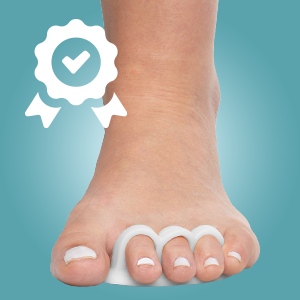If you look down at your feet and think they look strange, they may not just look unique, they may also be painful. Crooked toes are often the result of a condition known as a hammer toe. They are one of the most common foot conditions among females because of their use of high heels or shoes that are too narrow for the foot.
What is a Hammer Toe?
A hammer toe happens when your toe bends in the middle and curls up at the end, creating a hammer shape of your toe. It can take place with any toe but is most common in the second or third toes.
Although hammer toes can be caused by a variety of things, they are usually the result of an imbalance of muscles and ligaments in your toes. This causes the muscles to tighten and bend the toe, and eventually, over time, the toe cannot be straightened. Wearing shoes that don’t fit properly can result in hammer toes. Shoes, such as high heels that force the toes to be bent unnaturally for extended periods, can cause muscles to shorten.
When we walk, our toes straighten and extend. However, if they are crowded into a space that is too short or narrow, they may be forced to bend instead of straighten. Over time, this can result in a hammer toe. In addition, if you have a natural tendency to keep your toes flexed or have high arches, this can also contribute to hammer toes.
Symptoms of Hammer Toes
Hammer toes may be due to improperly fit shoes, some medical conditions such as arthritis, or even heredity causes. Regardless of the cause, they all have very similar symptoms including:
- Painful and/or difficult motion of a toe joint
- Calluses and corns that develop on top of the toe joint
- Swelling and/or redness at the toe joint
- In severe cases, open sores on the tops of toes
Any time your feet change the weight that weight is distributed when you walk has a potential to cause problems and pain, including the above symptoms, but the good news is, you don’t have to live with this pain.
Treatment for Hammer Toes
If treated in the early stages, it is often possible to fix the condition simply by changing the shoes you wear. After a hammer toe reaches a later stage and the toe is more bent, other interventions will likely be needed. Treatment for hammer toes may include:
- Wearing comfortable, properly fitting shoes that are not high heeled or too narrow.
- Stretching of your toe muscles to relieve pain and pressure and restore tendon and muscle balance.
- Moisturize the skin to keep it soft and healthy
- Ice and anti-inflammatory medications such as ibuprofen.
- Toe straightener pads that help to reposition the toe.
- Pads, caps, and tubes to protect the hammer toe
- Toe wraps to straighten and separate hammer toes to promote gentle healing.
- Toe crests to help straighten hammer toes and reduce rubbing and pressure between toes by keeping them properly aligned while moving.
Your foot pain does not have to, and shouldn’t, slow you down. With products for a variety of foot conditions, Zentoes wants you to stay active and healthy. Learn more today at www.zentoes.com.


